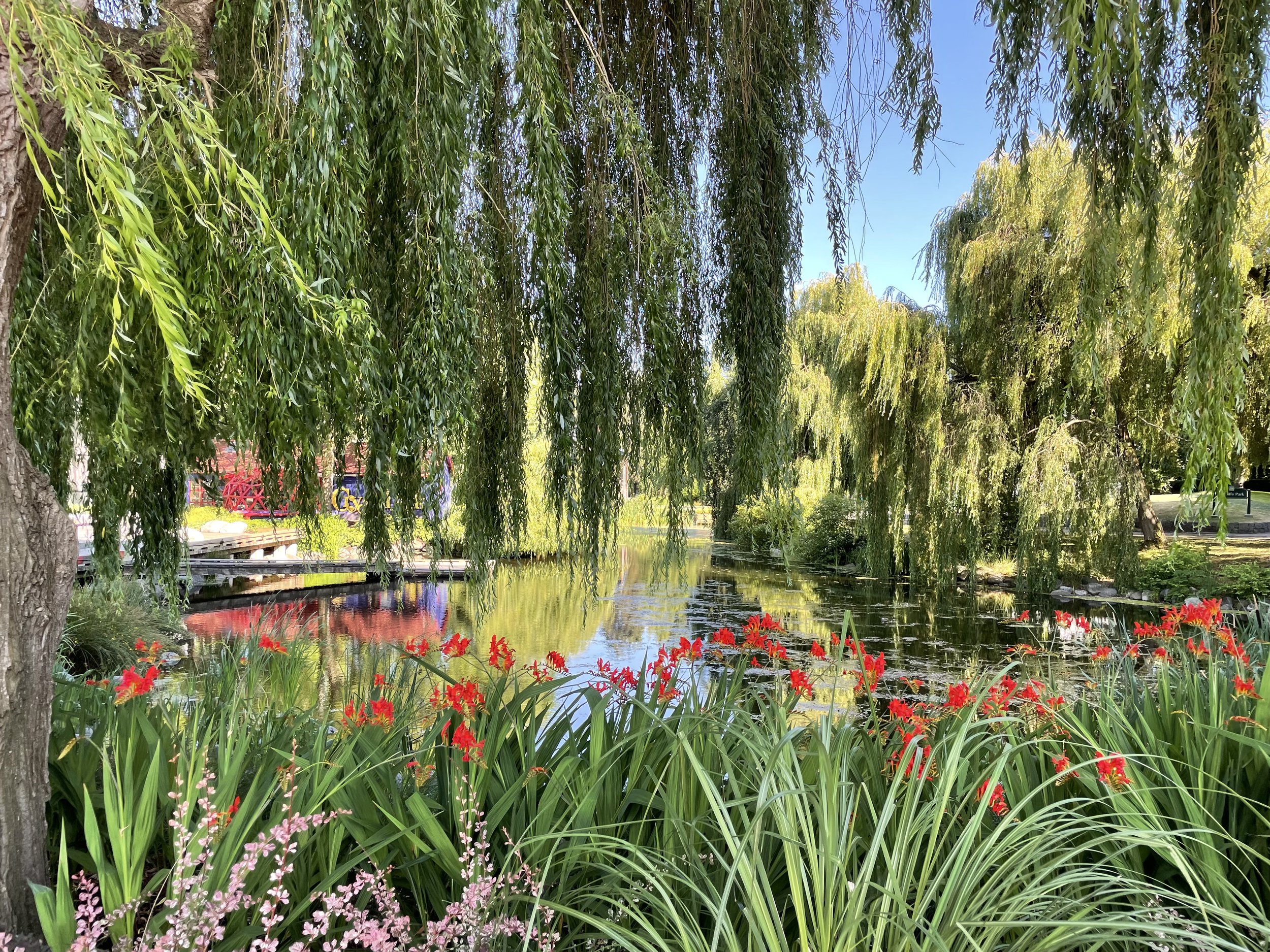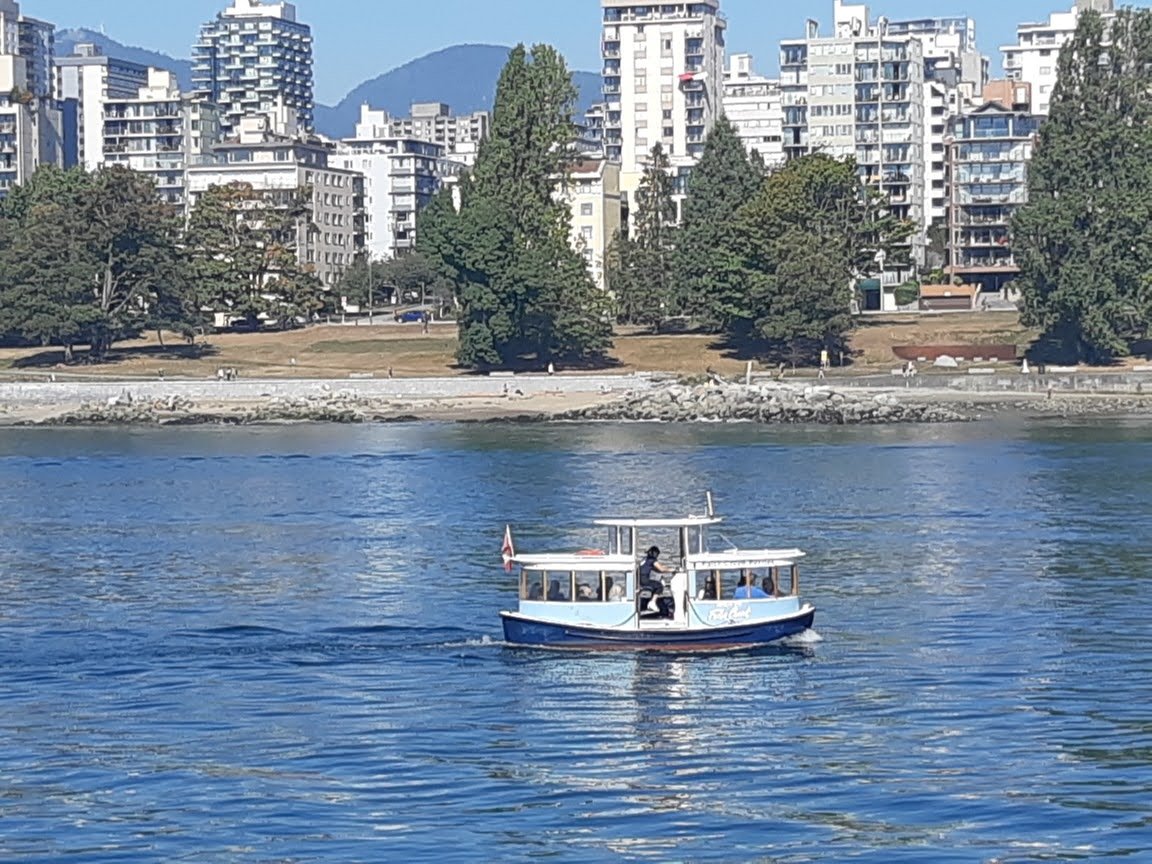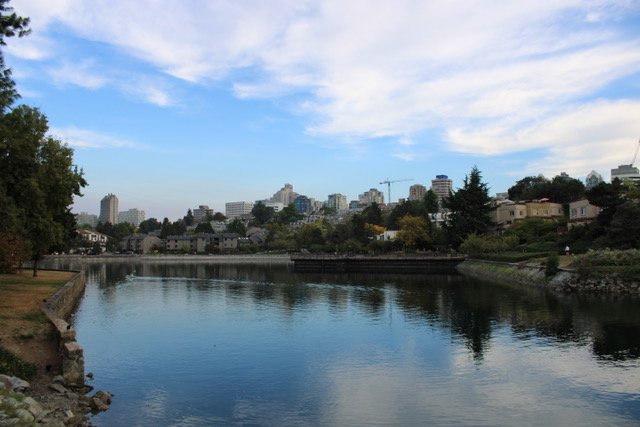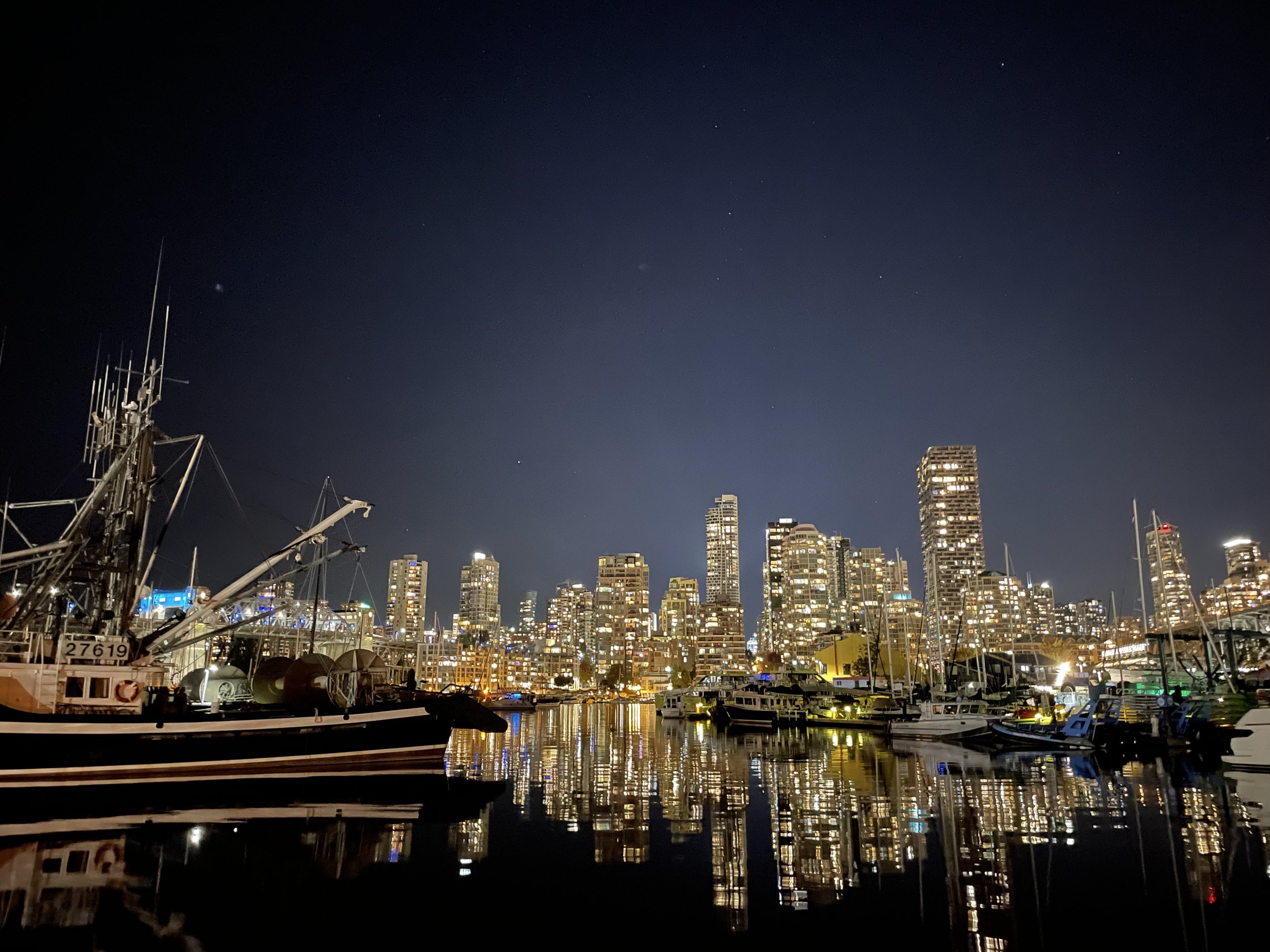Week 2.
Sense of Place
In the Second week the participants were asked to reflect on how living in Creekview Housing Co-op informed concept of Neighbourhood Livability and their Sense of Place. [more text here]
Questions posed to the participants included:
What stands out when you think about your connection to the spaces and places of our neighbourhood?
Are there spaces / places you cherish? What do they look like?
What does the livability of our neighbourhood look like / feel like to you?
What feelings convey your sense of place in this neighbourhood?
What emotions do you experience?
Janice
Contemplation
False Creek South is renowned as a WORLD CLASS MODEL for Integrated Housing. People come from all over the world to recognize and analyze this model. I keep thinking “Why would you want to dismantle that?” It is such a beautiful model to recreate.
I watched all of City Hall meetings, every single day, and I was one of the last speakers. There were only two people out of 170 that had anything good to say about the new economic plan, the proposal that basically annihilated False Creek South.
We get over 50,000 tourists a year coming here.
One cannot tell where the private condominiums are relative to the affordable housing complexes. Economic division is dissolved by integrating both Co-ops and strata developments with beautiful park spaces, gardens, water parks and water features along the seawall. These alternate hubs of green space provide a relaxing reprieve from the concrete surroundings of the city. The diversity and inclusivity contribute to feelings of safety and security along a seawall that children can safely walk or ride their bicycle to school on.
Creekview
Gathering Space
This area in our garden has been transformed into a gathering space. A place where parents watch their children play and members gather and get to know each other.
This was a special evening. It was an evening to celebrate Bogdan’s birthday. Members, neighbours, came out to raise a toast and thank him for all of the work that he does!
Angie
Evening Lights
I’m consistently impressed by our city’s beauty.
Jan-Erik
With this image, I aimed to show how interconnected and accessible Vancouver feels. We see the docks in the foreground and the background of the Vancouver skyline and the two look beautiful; these visuals of such different places are a good reminder of how much is going on.
Vancouver has a huge variety of neighbourhoods and so many interesting places that you can go to, and I’m living in a location that’s at a perfect counterpoint between them all. I appreciate how I’ve never had to care about getting a driver’s license, since public transit and cycling make things so connected. It is so easy to find a bus and go wherever I need to go. This is something that I’ve always been very grateful for about living where I live.
Danuta
False Creek Ferry
The False Creek Ferry reminds me of our community’s own little Venice.
The ferries have been a great cultural part of our neighbourhood and are a nice reminder of my happy memories of living in Vancouver. I love that we get to travel to English Bay and Stanley Park and enjoy the beauty of False Creek in a unique way right next to the water.
We are very fortunate to be so close to nature but also close to the city.
We are all connected, despite being a massive community, and are lucky to be able to enjoy the beach, the seawall, and the city, during our busy lives, all within a boat ride’s reach.
Peace Plant
I have walked by this plant for over twenty years!
I have so many memories of walks to school; walks with friends and family. It is nostalgic to think back.
I have admired this peace plant every season. Its appearance changes through the seasons and is always so beautiful.
Carlina
Waterview
I enjoy daily walks with my son to watch the kayaks, boats, and wildlife, while soaking in some rays.
This hill is called “Ron Basford Park.” It now has many bunnies running around. They have made it their home.
This area brings me joy, a sense of calmness, and an experience of gratitude.
Carlina
False Creek
Jan-Erik
This photo shows the route that I’d take to get to False Creek Elementary School. I’d either walk or bike along the seawall, and I have some very early memories of biking down it with my parents in the morning. Naturally, this was very formative for me.
I don’t think I got it at the time, but retroactively I think about how convenient that was. I never needed to wait for a bus, I never needed to be driven, there was never any real difficulty to get there. This photograph evokes that gratitude.
Going forward, regardless of the school I attended, I’d always have some sort of route that took me either along or near the seawall. This was true up until I started going to UBC, although I could always just go a few blocks down on the walk home and get a beautiful view. That’s something I’ve always really treasured.
I sometimes experience a little bit of melancholy looking back, as I don’t take this route as much nowadays. There’s a sense of not being able to go back to the way things were. But, with time, the feeling ultimately gives way to happiness that I was ever able to take this route in the first place. It’s one of many benefits I can’t imagine my family would ever have been able to afford without a place like this to live in.
Danuta
Burrard Street Bridge
The Burrard Street Bridge is an excellent symbol for connection between communities.
Every day, for many years, I would commute to work using the Burrard Street Bridge.
I liked that work was easily accessible from home.
I was very active and life was quite hectic but still manageable.
Now, when I reflect, the bridge still looks good for its age, but I am getting older!
Romana
The Street Piano movement started in 2008 in England and has spread worldwide. More than 1,000 pianos have been installed outdoors in 45 cities across the globe. Anyone who wants can play them.
Vancouver picked up the initiative last year, when City Studio installed three instruments in public spaces during the summer. This year, the number has increased. City Studio installed 10 pianos, and Sean Pacey, owner of Pacey’s Pianos, partnered with the studio, donating 12 more pianos for the project.
Sean Pacey was not satisfied with simply leaving a piano on a street corner. He wanted communities to unite around the instruments, to claim ownership of their urban landscape and its music.
In 2018 Sean Pacey lent us a piano for free for our concert held on Granville Island.
Community Music
Music can provide a sense of relief and help us cope with the stresses of everyday life. It can be a good way to relax and unwind, given it has the ability to change people’s emotions and feelings in a matter of seconds.
Every Day Can Be a Car Free Day
Long ago I promised myself to only live in places where I can walk everywhere I need to go.
Päivi
Our co-op neighbourhood is marvellously walkable. The Seawall takes us easily to the east and west, the Arbutus Greenway south. To the north lies downtown, and I seldom need or want to head in that direction. The Seawall and Greenway take me shopping and to appointments, and provide access to exercise, walking, running, biking, or kayaking from the False Creek Community Centre. Pretty much everything I need in daily life is available in one of those directions.
Surrounded in greenery and flowers, these pathways also support mental health – I have taken walks with an anxious teen, walking them up and down the seawall; I have walked along a grieving neighbour, spent Covid isolation afternoons with a chatty friend, as well as taken late-night solo marches in the rain and dark to cool down overflowing emotions.
I love to bump into people I know along the paths, feeling a part of a community in the midst of a large city. I appreciate the accessibility of the Seawall so that I encounter walkers, runners, strollers, wheelchairs, seniors with walkers, dogs and the occasional cat on leashes, bikes and rollerskates, all sharing the path.
Although I have not managed to keep my walk-only pledge fully over the years, given that I currently commute to work on Translink for several hours a week, our co-op does have convenient bus and Skytrain connections to all directions. I am content to manage without a driver’s license, by choice – granted, with the occasional hitch-hiked ride to a plant nursery in South Vancouver or to cross-country ski on Cypress Mountain. Mostly I manage a very lovely life car-free, and I think it is amazing that is possible in the middle of such a huge city.
The Boardwalk
I walk here every day and sometimes several times a day.
A year and a half ago my husband was scheduled for quadruple bypass surgery. For over six months he was unable to do any exercise, except for walking, and this was very difficult for him, given how active he had been. Every single day for those six months we walked along this boardwalk.
The boardwalk is a very special place to me now.
I am super grateful that my husband is still alive and grateful that we have this beautiful neighbourhood to walk in.
Suvarna
I’m Bored, What can I do?
Païvi
Since I first moved to Canada, I have spent a lot of time in nearby community centres. They do not exist in my native country, and to me they are essential community hubs. Over the past almost twenty years that we have lived in the Creekview co-op, my nuclear family has consisted of three very active members and a relatively sluggish me. Three people, then, have required constant activity, while I have needed something to force me out of the house. The False Creek Community Centre, only 200 meters from our back door, has been an easily available source of pastime. Our whole family has connections to the community centre.
One child started off at the Centre in toddler music and gym classes; later, there were times when both parents were only able to work because the Centre offered kids’ camps that covered all school Pro-D days, holidays and teachers’ strikes. These were interesting camps, where our kids learned new skills but also agreed to go time after time, year after year. We were very grateful.
I have learned basic weight training, kayaking, photography, tai chi, and yoga there, creating lasting friendships in the process; and my partner has learned ocean kayaking and belonged to the FCCC seniors’ dragonboat team for years.
Last but not least, our kids have learned about democracy and government at the Community Centre during municipal elections, first while “assisting” us parents during election days, and for some years now voting themselves.
Public Art
I took this photograph because this is my son’s art work from when he was 3 ½ years old!
This is an image my son painted when he was at Swamp Willow Preschool.
All of the children had their art displayed on the walls of the False Creek Community Centre’s boat storage room. After a while the art work was taken down – all except my son’s!
I love walking by and seeing his art, and remembering those sweet times. It is a reminder that we have been in this community for twenty-five years and makes me feel a part of the community. I feel nostalgia every time I look at his piece. I have love for my son, my family, and for my community.
Suvarna
Play and Nature at Our Doorstep
Danielle
Although we live in the middle of the city in a very busy area, we can still find nature, peacefulness, and serenity. I like to walk around the neighbourhood through the gardens and the trees to watch and listen for wildlife. I enjoy seeing the flowers, birds, insects, and bats; it makes me smile and feel better. I need nature to live, to ground myself. Despite our co-op being right up against the bridge, I can still hear the birds from my balcony and look down upon this nature oasis in the heart of the city.
Living in False Creek, we also have so many cultural and art opportunities to share with our family and friends. How lucky we are to have so much so close to us. Play, nature, exercise, art, music, and a variety of activities. It is especially amazing to have my kids experience all of this.
To me this image is about connection and growth; witnessing all of the advancements and changes that have happened with my children over the years. We started coming here before my youngest son was born. There are also many connections with friends and family at this playground. Any time people come to visit, we must go to the “Blue Park”, where my kids ask them for a challenge. The challenges have definitely evolved over time. My older son is now teaching the younger one how to climb on the bars instead of using the stairs!
The “Blue Park” is a place where we have fun, bond, laugh together, comfort each other, and an exciting place where imagination flourishes as we head off into another play adventure.
The Blue Park
This is the “Blue Park,” as we call it. We have been coming here for eight years, and come here every week, and some weeks every day to play in the “Blue Park.” Sun, rain, snow or wind, weather does not matter, you may find my family and I playing at the “Blue Park”.
Danielle
Since 1978, City Farmer has been teaching people how to grow food in the city, compost their waste, and take care of their home landscape in an environmentally responsible way.
Everybody can grow food at home, in backyards, community gardens, or on flat roofs. For four decades, City Farmer has encouraged urban dwellers to pull up a patch of lawn and plant some vegetables, herbs and fruit. The message is the same today as it was in 1978 and will be relevant far into the future.
During the summer of 2016, metal artist Davide Pan created a new window / gate at the Compost Garden. The gate faces the City of Vancouver’s new Arbutus Greenway, a corridor stretching 11 kilometres from near downtown Vancouver to the Fraser River.
The window / gate is made of “obtainium,” materials collected and recycled from close to the location.
Most striking in the assemblage are parts from the century-old railway, such as spikes left behind by the crews that took up the old tracks. Many of the figures in the gate are designed from these pieces.
I appreciate feeling a sense of belonging to a community that cares about the environment.
City Farmer
There is a very unique project behind this gate: The Vancouver Compost Demonstration Garden.
Romana
Angie
Public Transportation – Bike-ability
I feel a sense of gratitude that I have access to accessible public transportation that gives us choices about how to get around. This is one of the factors of our neighbourhood livability.
I relied on the public transportation system most of my working years.
So many years ago, I was in a tragic car accident. I was not able to drive again, no matter how much I tried. It took me a while to even get into a car for a drive. Public transportation was my only choice to get around, and it allowed me to get around safely, to get to work, and to remain connected with friends and family.
I am thankful.
Seawall Refreshment
I really appreciate the idea of providing refreshment on the seawall.
These people are really hard-working. It is hard to stand all day on the seawall waiting for people to buy coffee and snacks.
Romana
Community Corner Store
I always prefer small food stores with friendly people.
This store has almost everything that you need and an amazing selection of ethnic food.
It is also open late, so that if you need something, you can get it with a smile.
Community Store
I like the owner of this store. I like his stories and his jokes. My wife always stops by to buy 6/49 or Lotto Max lottery tickets. She has never won anything.
I admire the owner. He is in the store every day, serving the community with basics.
Jan
Janice
Golden Jewel
The unique spectrum of economic diversity in False Creek South opens up a variety of activities for people to partake in or observe. Fishing, tourism, light industry, commercial, retail, hospitality, artist/artisan studios, and educational facilities, all create a vibrant bustle in this condensed area that is open to exploration and feeds curiosity. There is always something going on.
False Creek South and Granville Island have their own identity within the heart of Vancouver. There is no other part of the city that has this much economic diversity in close proximity. When you look at planning a neighbourhood, this model of economic and integrated housing is one to emanate rather than annihilate. People from all walks of life converge into a dynamic hub of activity with feelings of belonging and inclusiveness.




















